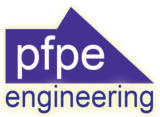According to the PN-B-02852 standard, the fire load density is the thermal energy, expressed in megajoules, which may arise during the combustion of combustible materials in a room, fire zone or solid material landfill per unit area of the object, expressed in square meters.
Accordingly, the fire load density GOO is a certain energy potential that can be released during a fire without taking into account:
- whether all combustible material will be burned,
- at what time will this energy be released, which is the key factor.
Let’s focus on time
My favorite example is the burning of paper, especially paper stored in standing rolls (a common method of storage) and paper products (e.g. printer paper, notebooks or books) packed in packages and stored on shelves.
In both cases, it is the same paper with the same heat of combustion and the same GOO for both fire zones, however, fire of paper stored in rolls standing vertically in accordance with NFPA 204 is classified as ultra-fast and develops approx. 20 times faster than densely paper products packed in cardboard boxes and stored in shelves.
This means that the difference in the fire development of products having the same heat of combustion and determining a similar value of the fire load density may be twenty times!
Time is a key factor as it is not the total amount of energy stored in the combustible material that matters, but how long it can be released, and this determines the formation of the most significant threats to people and structures.
Fire Load Density (GOO) and the law in Poland
In Poland, the height of the object (for multi-storey buildings) and the fire load density value prevail as the main criteria for selecting security in production and warehouse facilities. On their basis, the following are defined:
- The fire resistance class of the building, and consequently the fire resistance class of the building elements.
- The maximum area of the fire zone.
- Maximum lengths of passageways and escape routes.
- Minimum distances from other buildings and the plot boundary.
Let’s compare two example buildings:
- A large sewing room in a low four-storey building up to 12 m with a GOO of up to 1000 MJ / m2 – characterized by large rooms with several dozen or more sewers surrounded by piles of sewn products (probably cotton with synthetic admixture). Inside the rooms, there are many electric devices that do not require periodic inspections.
- One-storey warehouse intended for the storage of rubber and oils with a GOO above 4,000 MJ / m2 – storage at a temperature of approx. 15-25 ° C with a flash point of oils of approx. 200 ° C, operated by several stackers with forklifts.
Question no. 1 – in which building are there serious fire hazards?
Question no. 2 – for which building is laid down in Polish law much more stringent requirements (construction, area of fire zone, length of escape routes …)?
Answer to question no.1 – in the sewing room, where it is:
- The probability of a fire in a sewing room is much higher than in a warehouse, where it will only be possible due to arson.
- A real threat to health and life for the people staying there, because the development of a fire in a given room will be much faster when the horizontal and vertical escape routes are highly smoky (including emission of many toxic substances).
Answer to question no. 2 – for a warehouse there are serious requirements for the structure and large restrictions for the area of the fire zone, which results in the application of permanent water extinguishing devices and often also smoke extraction, which in this building will not constitute an added value for the fire safety level.
According to Polish law, in the sewing room building, no technical fire protection is required, apart from hydrants, which women working in the sewing room are unlikely to use, and the fire zone can be four times larger.
What in exchange?
Parameters describing real fire phenomena in a given fire zone should be used, e.g. fire power and fire circuit, the definition of which is closely related to the time and amount of energy emission and the speed of fire spread.
It is also worth considering the method of using a given facility, e.g. if we want to use the above-described oil and rubber warehouse with GOO> 4000MJ / m2 and area> 4’000 m2, apart from the protection of a permanent water extinguishing device, we will also have to equip it with smoke extraction !!!
What will give smoke extraction in this building, where a few or a dozen stackers are evacuated in a few minutes, and the removal of smoke or heat will be a fiction, especially through the gravitational smoke exhaust system during the fire extinguishing operation of sprinklers. There will be only one effect – delayed operation of sprinklers !!!
Sprinklers will solve the problem, and smoke flaps or a mechanical smoke removal system will only be a problem and cost during investment and operation.
On the other hand, in the above sewing room, smoke exhaust is not required, and the permissible area of the fire zone is 8’000 m2 without even providing an enclosed staircase.
